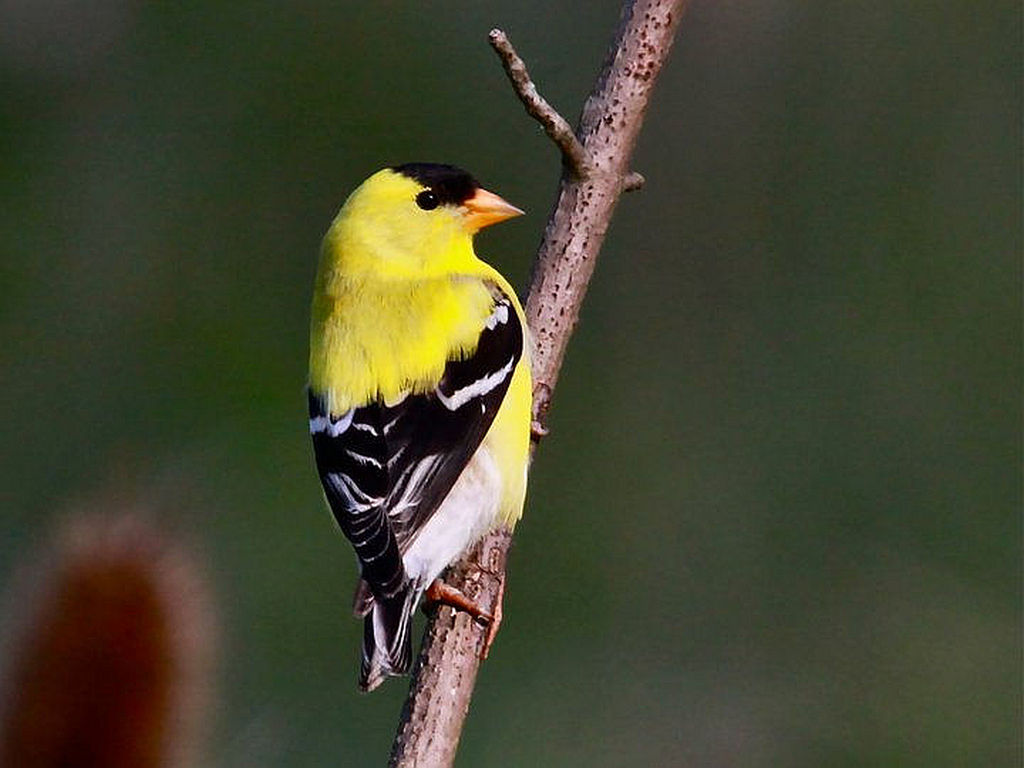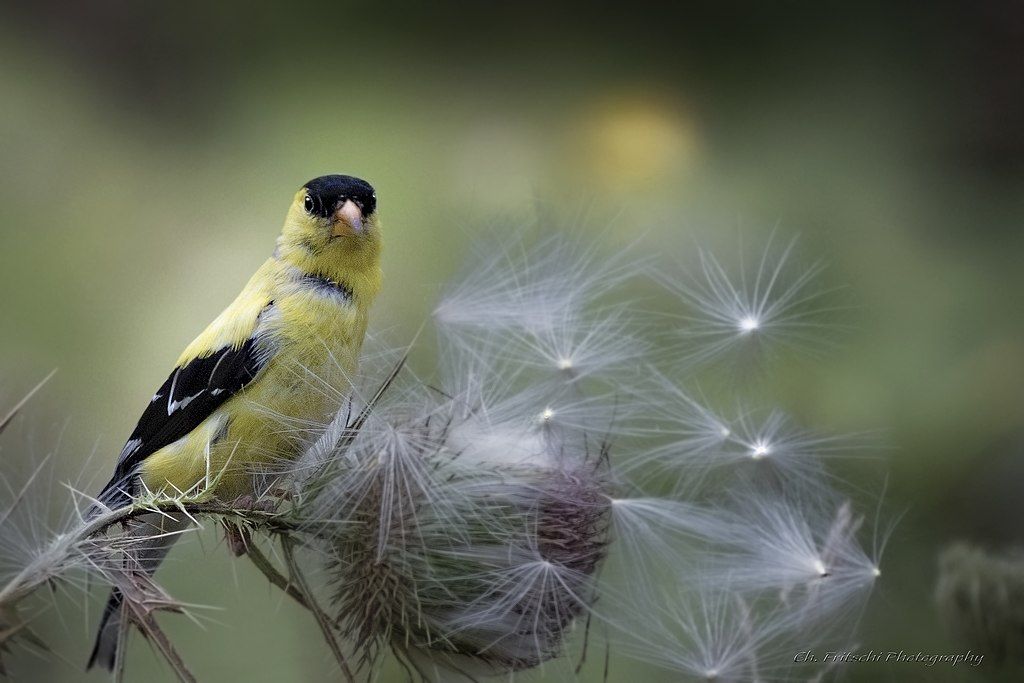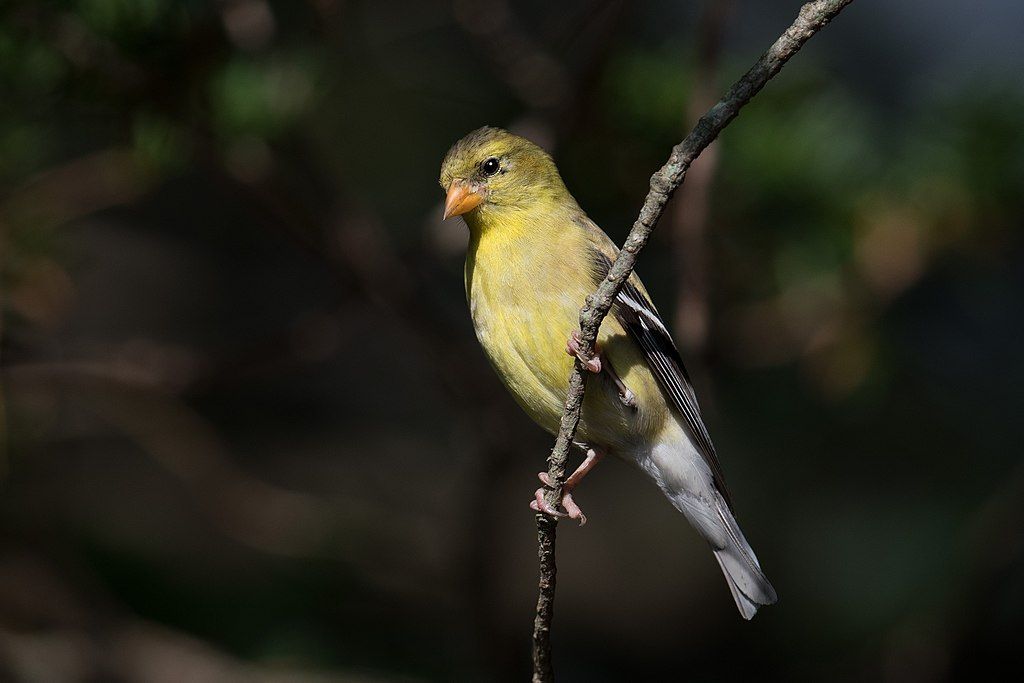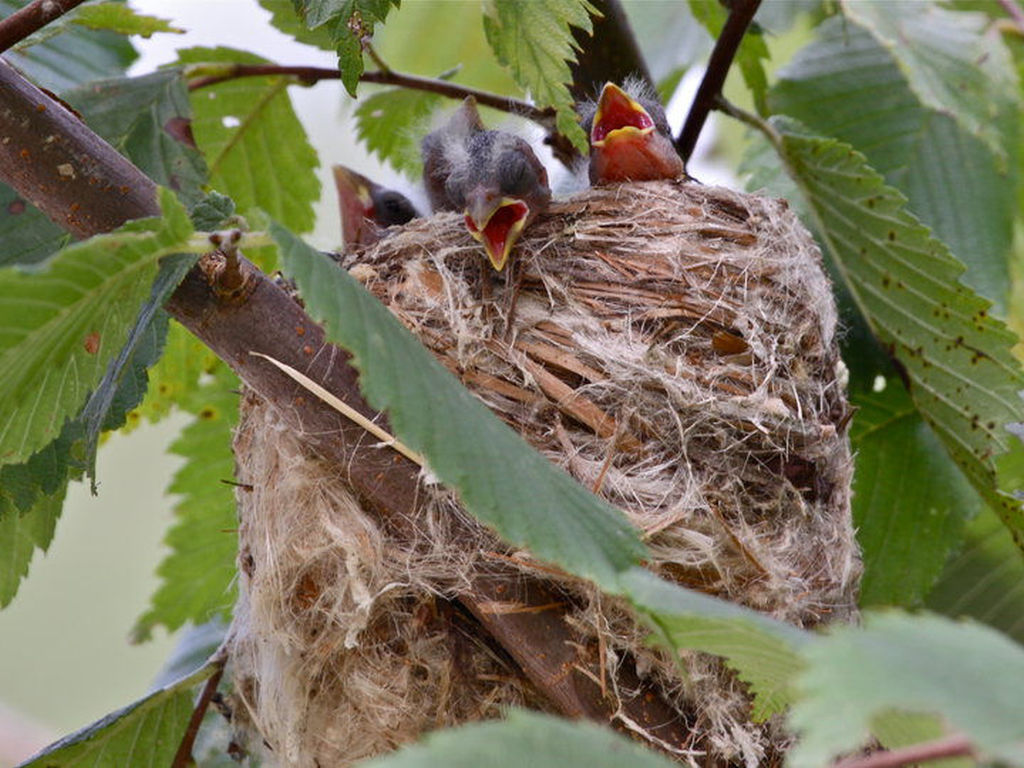
12 July 2021
While most songbirds began nesting in May and some have finished for the year goldfinches wait until now to start a family.
Unlike most birds American goldfinches (Spinus tristis) are totally vegetarian. They eat only plant matter, never insects, worms or meat so they wait to nest in July when their favorite foods are plentiful. Foods such as thistle seed.

The female goldfinch builds her nest in a shrub or sapling, laying a foundation of spider silk and adding rootlets and fibers. Then she lines the nest with soft down, often using thistle fluff.

She lays one egg per day for a clutch of five and starts incubation at the next-to-last egg. In 12-14 days her babies hatch.

It’s still July. Now the fun begins!
The parents make many trips back and forth from thistle fields to the nest where they feed by regurgitation. Sometimes the adults munch on leafy vegetables, even in gardens, which earned them the nickname “Salad Birds.”
If the nest had a cowbird egg in it that brown-headed cowbird nestling dies within 3 days because it can’t survive without insect protein.
Meanwhile if you listen for the male in his looping courtship flight you might be able to find the nest inside his circle. Listen and watch for “potato chip.”
You’ll also hear a new call if anything dangerous shows up near the young. The warning is “beer BEE.”
While scarlet tanagers, Baltimore orioles and northern rough-winged swallows have finished nesting, July is goldfinch month.
(photos by Chuck Tague and from Wikimedia Commons; click on the caption to see the original)
All incredibly interesting and stuff I certainly did not know! Thank you!
Do you know if it safe to feed them? I took down my feeders based on the guidance I read due to the disease that’s spreading, but I have a brand new bag of nyjer seed and they are some of my favorites to watch outside my own window.
Chad, I haven’t heard anything yet about the restrictions being lifted. They do restrict all feeding. I’m hoping the restrictions will end by Aug 1.
Goldfinches love my sister’s zinnias. They perch on the flower and eat the petals until the flower is bare!